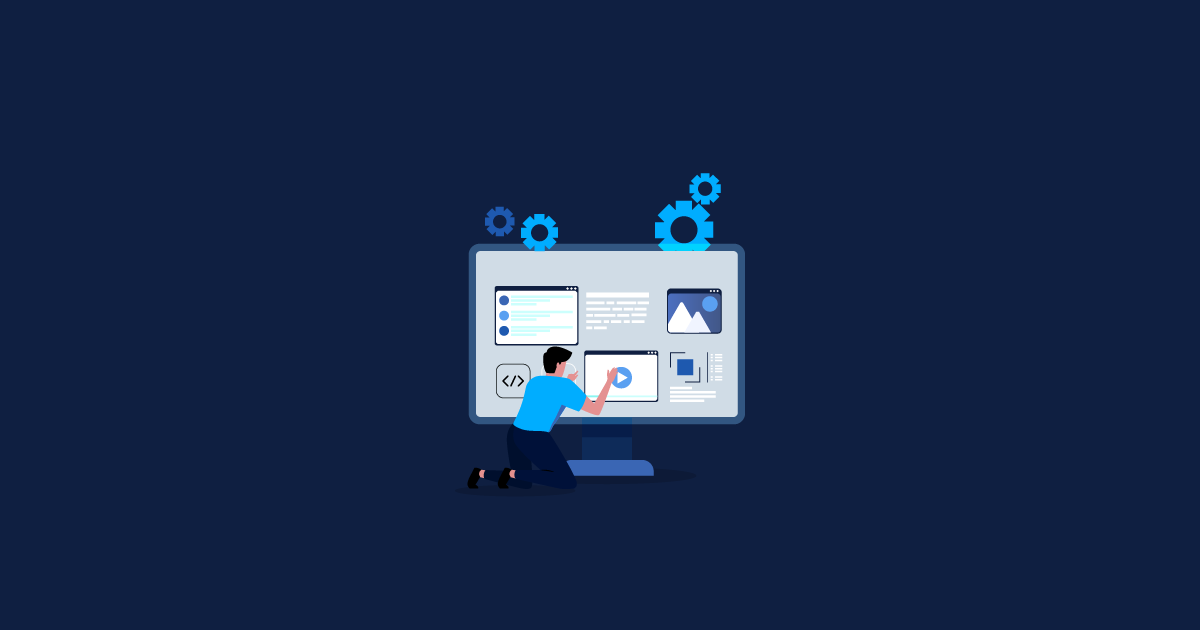Ecommerce is a highly demanding industry. It is estimated that you need 12 positive customer experiences to compensate for the loss caused by 1 negative experience.
70% of these customers find the checkout experience to be the biggest complaint in the ecommerce platform. Even a nominal increase in customer experience can increase the store revenue by $823 million over three years.
Yes, that’s how the customer experience mathematics works in the retail business. Let’s explore some more interesting trends.
A customer behavior study by Accenture reported that 47% of the customers would pay more if their expectations are met.
A Deloitte survey shows that customers are willing to spend 140% more than what they usually spend if they have a positive experience.
Well, achieving these magic numbers is not easy without impressing your customers well.
The rapid evolvement of technology is pushing the bar higher for more transcendent usability and intuitive user interactions. Ease, accuracy, and speed are the 1-2-3 punch to keep your customers happy and loyal for the long haul.
From numerous ways to induce positive customer experiences, leveraging Point-of-Sale (PoS) is surely one of the most effective ways. Adding a POS system, tablet, and mobile-based POS version gives a great opportunity to improve customer experience, better sales, and elevate the brand position.
So, let’s start from the beginning and define what is a POS system.
What is the Point of Sale System?
The point of sale refers to a particular point when a sale happens. POS (Point of Sale) is a technology for retail businesses and other service providers to complete their retail transactions effortlessly from anywhere at any time. So, it is a combination of hardware and software that centralizes business management. A modern POS system is not only used to process sales transactions but also automate manual tasks, provide real-time reports, help you manage your inventory, customers, and more. A POS system is a must-have software – whether you run a retail store, restaurant, cafe, or even a food truck.
Here are a few ways POS systems improve the customer shopping experience:
Why POS testing is important to ensure quality?
Retail businesses are highly competitive and an effective point of sale system can make a huge difference. It will help in increasing business efficiency by eliminating unnecessary work. If POS does not work as expected, the business is more likely to experience:
Incorrect record management.
Increased man-hours to process and current the unreliable data.
Erroneous information in sales reports.
Difficulty in tracking discounts, promotions, and coupons.
Incorrect loyalty members data.
Therefore, it is very important to have a reliable POS solution that performs seamlessly and securely. To ensure this, it demands rigorous POS testing.
POS Architecture
POS system architecture looks complex, but it is not tricky when you understand the concept well. It deals with various terminals in the store that are connected to a file server. The main configurations are set on the server and pushed to every terminal in the store. Since POS systems accept different payment modes, they are integrated with the third-party payment providers who accept different payment methods.
This is how a POS system architecture looks like:
What needs to be tested in a POS system?
A POS system needs to be tested for three key components, which are detailed as under:
POS device/terminal: It includes multiple performance aspects and functionalities of the POS terminal such as device functioning, associated hardware like barcode reader, printer, scanner, etc. along with the performance attributes.
Local server: It comprises key information, business and transactional data of the POS devices that are linked with the POS applications. It requires interface testing along with analytics, security, and recovery testing.
Enterprise server: It requires the same testing activities as a store server. Some of the testing scenarios include an interface, security, business intelligence and analytics, and recovery.
To ensure the POS quality of retail business, proper POS testing of the application is very crucial. Along with the key components, the application needs to be tested for a lot of things. A few are listed below:
Back-office integration: POS interaction verification with the store server and back-end systems.
Cashier activity: It includes verification of customer transactions like store value cards, entry of items, discounts. It also includes non-customer transactions like petty cash, cash drawer loans, and closings.
Platform validation: If the POS supports various platforms, then the functionality needs to be verified on all the platforms.
Sales: The data of regular sales, sales with a gift card/debit card/credit card, return, exchange, inventory, loyalty member purchase, prices need to be verified.
Return and exchange: Validation of return and exchange of items with different tenders (credit, cash, etc.).
Discounts and promotions: Item-wise discount, line-item discount, and other variants of discount need to be verified.
Loyalty member data: The system needs to track what the customers are buying and who they are. It keeps a track of sales, times of day or week, type of customers, and salespeople. This data is collected from the POS system to plan long-term strategies.
Ability to read the card: Testing of various types of cards like magnetic stripe, CAV, etc.
Performance: Time taken to send the card reading request, receiving the response, and apply transaction-based rules for tax, discount, rebates, etc.
Negative scenarios: Validation of the transaction declined scenarios due to invalid PIN, card, expired card, etc.
Sample Test Scenarios for POS in Retail Industry
Test Scenario |
Test Cases |
Challenges in POS testing
The POS software needs to be tested thoroughly, especially for retail domains. That being said, the point-of-sale system consists of various challenges that need to be addressed in the initial stages of development before the system testing begins. Some major challenges are:
Varying Configurations
When the business deal with multiple locations, the POS software needs to consider the requirements of each store. For example, one store is running a special promotion that is not applicable at other locations. It gets challenging to examine how well the POS system handles the varied configurations within the system.
Intricate Interfaces
The payment process seems to be easy but a lot of things happen during the payment process. A point-of-sale system usually showcases an intricate interface. POS application testing needs to be conducted with a comprehensive test plan that includes all the features and touchpoints within the application.
Payment Card Industry (PCI) Compliance
Any business or industry accepting payments with debit or credit cards should be PCI compliant. POS testing also needs to focus on eliminating the risk whenever the card details of consumers are involved. Without the specific payment compliance test cases, your business is more likely to face security breaches, lost revenue, and lost loyalty.
Continuous Upgrades and Maintenance
POS testing requires a specific test framework for all devices, including different software versions and various types of hardware devices. Therefore, it requires a strong testing framework that considers compatibility and integration testing.
How to Perform POS testing?
POS testing can be performed manually or through automation tools. However, there are various challenges in the execution of manual testing such as multiple configurations, peripheral issues, complex interfaces, setup and maintenance of test environment, security compliance, etc. However, automation has been proved to be an effective option to the manual testing method over a POS system considering the benefits such as reduced cost and time, customized reports, and consistent quality.
Automated POS Testing Best Practices
The implementation of POS testing automation leads to a better quality of the software while keeping the costs low. The POS automation strategy needs to be designed by following the best practices of automation testing. Below are some of the pointers to create an effective automation framework:
Selection of the Right Tool
The selection of the right automation tool is the key to project success. The first step is to define the purpose of the test and provide feedback by viewing the log files. Then, the testers can review the tool and make the selection. For example, an Omni channel retailer can have the following considerations at the time of choosing automation tools:
Ease of providing input test data for load tests.
Need of operating system, WPF application, or language.
Type of testing requirement (regression, unit, functional), and will the automation tool maximize the return on investment.
Establishing the Framework
The next step is to set a specific framework by considering the predefined set of processes that interacts between different components on which the further deployment will be done. It is recommended to keep the framework portable and robust so that it can be used in the future as well.
Run Test Scenarios
The iterating process is considered ideal in the case of automation testing. For seamless testing on multiple hardware configurations and software platforms, the basic uniformity needs to be maintained to ensure robustness and portability.
Third-Party Interactions
This is one of the key requirements for project success. The automation testing success depends on how well it interacts with the third-party tools to fulfill the dynamic needs of the business. POS system interacts with various systems like ecommerce, merchandising, audit, etc. It increases the need for extensive validation of system performance. Therefore, the POS testing tools are used to create a scalable and flexible automation framework.
Automate Your POS Testing with QAonCloud Today
POS applications involve complex configurations and processes. Additionally, the standards and technology of POS applications move too rapidly, and therefore, you need experienced QA testers and engineers to understand the changing requirements. If you are aiming for a seamless, secure, and well-integrated user experience, QAonCloud can help.
Our team of POS application testing experts can ease all your concerns related to POS testing and related functionalities. We can help you with the most industry trends in context to test creation, execution, and maintenance, and deliver the product that can survive the competitive business world. Get a free consultation with our POS testing experts today.




